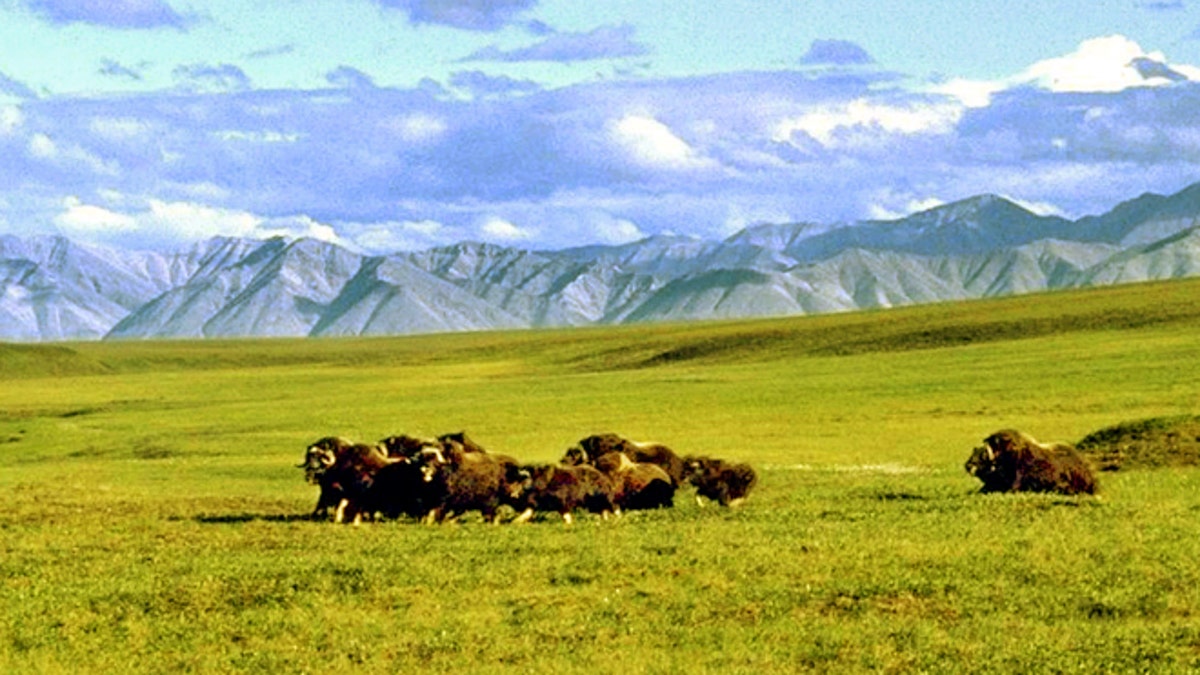Fox News Flash top headlines for Sept. 12
Fox News Flash top headlines for Sept. 12 are here. Check out what's clicking on Foxnews.com
The House on Thursday voted 225-193 to reinstate a decades-long ban on oil and gas drilling in Alaska’s Arctic National Wildlife Refuge in a move meant to stymie President Trump’s plan to open up the wilderness to commercial interests.
The move by the Democrat-controlled lower chamber of Congress is largely symbolic as the Senate, which is still in the hands of Republicans, is unlikely to take action on the bill, and even if it did, Trump has vowed to veto any legislation that would prevent oil and gas drilling in ANWR.
The drilling was authorized under a 2017 tax cut approved by the Republican-controlled Congress, an action the House vote attempts to undo.
The bill's Democratic sponsor, Rep. Jared Huffman of California, said there are "some places too wild, too important, too special to be spoiled by oil and gas development."
NATIVE ALASKANS DIVIDED OVER OIL DRILLING IN PRISTINE ARCTIC REFUGE AND ITS POTENTIAL RICHES
But Republicans, including all three members of Alaska's congressional delegation, said drilling can be done safely with modern techniques and would decrease U.S. dependence on foreign oil and create jobs for Alaskans.
Rep. Don Young, R-Alaska, said Huffman "certainly takes a great interest in how we Alaskans operate. I would suggest he pay more attention to the issues in his own back yard and let me handle mine."

A herd of musk ox graze in an area of the Arctic National Wildlife Refuge in Alaska, in this undated file photo. (AP)
Young called the Democratic bill "a sham" and said, "Despite the Democrats' ongoing efforts, this is not a wilderness area. Let me say again: the [area set aside for drilling] is designated for development."
While widely opposed by many Democrats and environmental groups, drilling in ANWR enjoys broad support from Alaskans – including the state’s Native American population who stand to benefit from oil and gas drilling on the land under the Alaska Native Claims Settlement Act.
At the heart of the battle over ANWR – a 19.6 million-acre tract of land flanked by the Brooks Range to the south, the Beaufort Sea to the north and Canada’s Yukon province to the east – is a section of the refuge called the coastal plain, or section 1002.
TAX BILL MOVES OIL DRILLING IN ALASKA'S ARCTIC REFUGE ONE STEP CLOSER
On one side of the debate: Alaska’s Republican lawmakers, its Native corporations and a fossil fuel industry that sees the estimated 7.7 billion barrels of oil under the coastal plain a boon to the state’s flagging economy that has suffered from low oil prices on the global market and a decline in crude flowing through the Trans-Alaska Pipeline.
On the other side: Environmental groups and the indigenous Gwich'in people, who consider the coastal plain sacred land and say oil drilling would ruin a fragile habitat for gray wolves, polar bears, porcupine caribou and more than 200 species of migratory birds.
“ANWR is a national treasure and an amazing piece of land,” Nicole Whittington-Evans, the Wilderness Society’s Alaska regional director, told Fox News. “It is not a place where oil and gas development should be allowed.”
ANWR Facts
- Refuge was created in 1980 under Carter Administration
- Encompasses 19.6 million acres along Alaska's northeastern border with Canada
- Home to polar bears, porcupine caribou, gray wolves and over 200 species of migratory birds
- There are an estimated 11.8 billion barrels of oil under ANWR's coastal plain
The refuge was created in 1980 as part of comprehensive public-lands legislation signed into law by President Jimmy Carter that put more than 100 million federal acres in Alaska under conservation protection. Lawmakers at the time recognized the potential for oil drilling on the coastal plain, but they prohibited leasing or other development on the land unless authorized by a future Congress.
In 1995, the Alaskan delegation inserted a provision opening ANWR to development in a budget reconciliation bill, but the bill was vetoed by President Bill Clinton. In 2005, despite having the Senate, House and White House all in Republican hands, a push to open ANWR was also unsuccessful as a number of moderate Republicans voted against it.

Huffman and other supporters of the House bill note that the refuge is home to more than 200 different wildlife species, including bird species that migrate to states and districts across the country.
"You don't have to have visited the refuge to be impacted and impressed by its ecological beauty," Huffman said.
CLICK HERE TO GET THE FOX NEWS APP
The vote on Alaska drilling comes after the House approved two bills Wednesday that would permanently bar drilling off the Atlantic and Pacific coasts and extend a moratorium on drilling off Florida's west coast.
Coastal lawmakers from both parties said the bills would protect U.S. coasts from drilling that can pollute crucial waters — and lead to disasters such as the 2010 BP spill in the Gulf of Mexico.

A polar bear sow and two cubs are seen on the Beaufort Sea coast within the 1002 Area of the Arctic National Wildlife Refuge in this undated handout photo provided by the U.S. Fish and Wildlife Service (Reuters)
Opponents, mostly Republicans, said the bills undercut domestic energy security and limit thousands of job opportunities.
The Associated Press contributed to this report.





